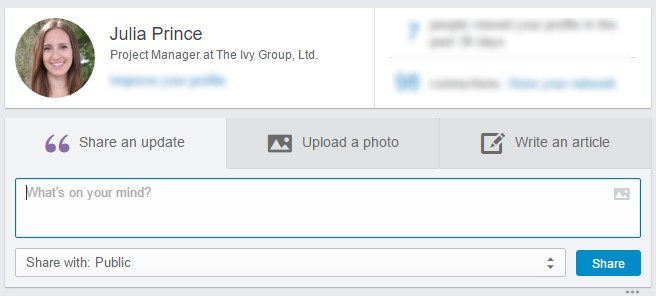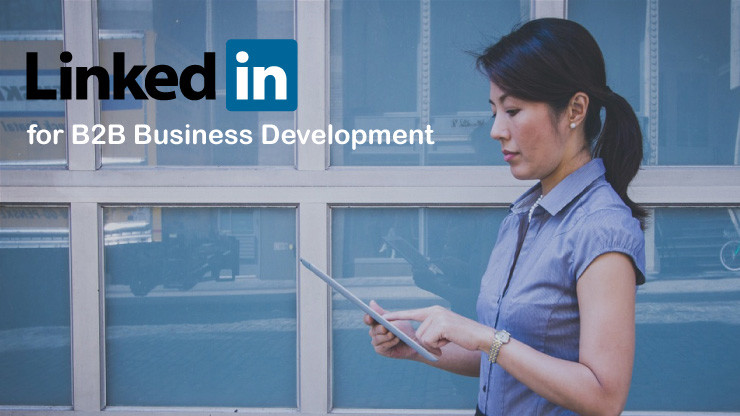LinkedIn offers an entire suite of features to make your job easier. It's the Facebook of the professional world and a business developer's dream. Follow these 6 steps to make the most of LinkedIn for B2B business development.
1. Maximize your profile.
It all starts with a tricked-out profile. Much like the online dating world, you won't get very far on LinkedIn without completing your personal profile, including a photo and bio.
Use a professional headshot with a neutral background (no after work happy hour pictures!) that communicates some personality. Be sure to fill out your profile completely with education, work experience, and a keyword-rich summary.
2. Make connections.
If you're just getting started on LinkedIn, expand your network by connecting with friends, colleagues, vendors, prospects, classmates--anyone with whom you have had a professional relationship. Add a link to your LinkedIn profile in your e-mail signature. Another tip: maximize your Gmail contacts with Rapportive, a Google extension that previews a contact's LinkedIn profile inside your Gmail inbox.
After meeting someone new, immediately follow-up by connecting with them on LinkedIn, while you are still fresh in their mind. Be sure to include a personal note with some context as to how you met.
Once you've made connections, engage with them! Connect with people in your network by liking and commenting on updates, endorsing skills, congratulating someone on a new position, and offering opinions on shared content. Engaging with your connections will not only develop your relationship with them, it will also help you be seen by others within the network.
3. Share content.
For business development, your personal LinkedIn profile should function as a mini-company page, putting a face to the corporate content shared by your company. Post relevant company content such as news articles, blogs, and other PR pieces to show not only that your company is going places but you are an engaged member of the organization, an ideal point of contact for inquiry. Share and interact with your company's content often, always personalizing your engagement with a thoughtful, valuable message. Be sure to regularly post your own professional updates as well.

4. Participate in groups.
Position your organization as the industry leader. Find relevant groups in your industry--or your clients' industries--and participate in discussions and start conversations on topics that are within your area of expertise. Groups will encourage your own professional development while building your reputation within the community.
5. Search to create prospect lists.
Start with the "People you may know" list. LinkedIn has recommended these people to you for a reason--find out who and what you have in common before you connect.
Creating a list of businesses to target is easy with LinkedIn's advanced search filters. Search by location, industry, and company size to build a starting list of companies that match your ideal customer. Don't be afraid to step up your search game with advanced search.
Once you've identified target organizations, search their employees to identify decision makers. It's possible that who you're looking for is not on LinkedIn--don't panic. Venture outside of LinkedIn to review the company's website and find the contact information of the purchasing department, managers, or other potential sales leads.

6. Send InMail.
Say hello to your business targets. If you're already connected, sending a message on LinkedIn is free. If the recipient is not in your network, you have to pay to get into their inbox. (LinkedIn has bills to pay, too! Here’s their sales pitch). Don't want to shell out the cash? There's always good old fashioned e-mail.
Your message should mention connections you have in common, especially shared business interests. Add a personal note to the connection request. Finally, follow the prospect's company page on LinkedIn to stay plugged into news that will give you something to talk about in your follow-up message.
B2B business development on LinkedIn comes down to making yourself and your company look good, using search tools to target businesses and employees who matter to you, and personalizing messages that will get your foot in the door.
Category: Social Media
Tags: social media
